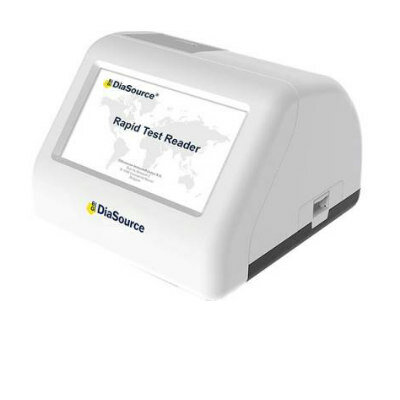Sequencing Primer Sets for Disease-Related Genes Now Available
By LabMedica International staff writers
Posted on 10 May 2012
A new line of dedicated DNA sequencing primers for human disease-related genes is now available for drug developers and other biotech researchers.Posted on 10 May 2012
Primer sets for human TET2, CBL, KRAS, and RUNX1 genes - especially designed for use on the Roche (Basel, Switzerland) 454 GS Junior and GS FLX DNA sequencing systems - have been released to the biotech market. These genes are known to be associated with developmental defects, disease progression, and residual disease in a variety of leukemias and myeloid malignancies. The assays, which include primer plates, protocols, and dedicated analysis software, were co-developed with and extensively tested at the MLL Munich Leukemia Laboratory (Munich, Germany).
The new line of primer sets will mesh seamlessly with the Roche’s recently released GS Junior System, which supports the sequencing of samples from a wide variety of starting materials including genomic DNA and PCR products. Samples such as genomic DNA are randomly fragmented into small, 300 to 800-basepair pieces. For smaller samples, such as small noncoding RNA or PCR amplicons, fragmentation is not required.
Using a series of standard molecular biology techniques, short DNA adaptors are added to each library fragment. These adaptors are then used in subsequent quantification, amplification, and sequencing steps. The single-stranded DNA library is immobilized onto specifically designed DNA capture beads. Each bead carries a unique single-stranded DNA library fragment. The bead-bound library is emulsified with amplification reagents in a water-in-oil mixture resulting in microreactors containing just one bead with one unique sample-library fragment.
Each unique sample library fragment is clonally amplified within its own microreactor, excluding competing or contaminating sequences. Amplification of the entire fragment collection is carried out in parallel; for each fragment, this produces several million copies of the original fragment per bead. Subsequently, the emulsions are broken to facilitate collection of the amplified fragments bound to their specific beads.
The clonally amplified fragments are enriched and loaded onto a PicoTiterPlate device for sequencing. The diameter of the PicoTiterPlate wells allows for only one bead per well. After addition of sequencing enzymes and reagents, the fluidics subsystem of the Genome Sequencer System serially flows nucleotides in a fixed order (i.e., first T, then A, etc.) across the hundreds of thousands of wells containing one bead each. Addition of one (or more) nucleotide(s) complementary to the template strand results in a chemiluminescent signal recorded by the CCD camera of the Genome Sequencer System. The intensity of the resulting signal is proportional to the number of bases incorporated.
The combination of signal intensity and positional information generated across the PicoTiterPlate device allows the software to determine the sequence of 100,000 individual reads per 10-hour instrument run simultaneously.
Thomas Schinecker, president of the Roche subsidiary 454 Life Sciences, said, “Blood cancers consist of widely varying subtypes which can be difficult to characterize using traditional approaches. We are pleased to offer a solution that leverages the strengths of the GS FLX and GS Junior System to deliver long, high-quality sequencing reads, and enables better characterization of genetic variations in leukemia samples.”
Related Links:
Roche
MLL Munich Leukemia Laboratory













